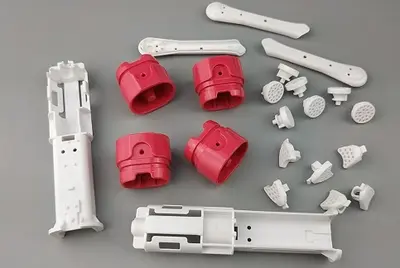

Injection molding is a widely used manufacturing process for making plastic products. It involves injecting molten plastic into a mold cavity and allowing it to cool and solidify, resulting in the desired shape. While the process itself may seem straightforward, understanding the materials used in injection molds is key to achieving the perfect plastic product. In this article, we will delve into the secrets behind the materials used in injection molds and the process of creating them.
Understanding the Role of Materials in Injection Molds
When selecting materials for injection molds, several factors come into play. The chosen materials must possess durability and strength to withstand the molding process and produce consistent results. Heat resistance is essential since the molds need to withstand high temperatures during the injection process. Lastly, dimensional stability is crucial for ensuring that the molds retain their shape and do not deform when exposed to molding pressures.
The two most commonly used materials for injection molds are steel alloys and aluminum alloys. Steel alloys, such as P20, H13, and S7, are renowned for their exceptional strength, toughness, and heat resistance. They offer longevity, making them ideal for high-volume production. Additionally, steel alloys have excellent dimensional stability, ensuring precise and consistent molding results. However, steel molds can be costly and time-consuming to fabricate due to their high hardness.
On the other hand, aluminum alloys provide an attractive alternative to steel molds, especially for low to medium volume production. Aluminum molds offer benefits such as faster heat transfer, reducing cycle times, and allowing for rapid cooling of the molded parts. These molds are also lighter, making them easier to handle and install on injection molding machines. However, aluminum molds may not be suitable for high-pressure applications as they have lower wear resistance compared to steel. They are also more prone to physical damage, which can impact their longevity.
While steel and aluminum are the most common choices, there are other materials and niche alloys that find utility in specific scenarios. Copper and copper alloys, for example, possess excellent thermal conductivity. These materials are particularly useful in situations where fast heat dissipation is crucial. Unique applications may demand materials with specific properties, such as high electrical conductivity or resistance to corrosion and wear. In such cases, specialty alloys tailored to specific needs can be used to create injection molds.
The Process of Making Injection Molds
The process of making injection molds involves several steps, starting with the design of the mold itself. A well-thought-out design is essential for achieving accurate and consistent molded products. Computer-Aided Design (CAD) software is commonly employed to create detailed models of the mold, taking into consideration factors such as part geometry, cooling channels, and ejection systems.
Once the design is finalized, the selection of materials for mold fabrication becomes crucial. The specific properties of the chosen materials impact the molding process, mold maintenance, and lifespan. For instance, materials with high hardness, such as steel alloys, are more challenging to machine and may require specialized equipment. On the other hand, aluminum alloys are relatively easier to machine, making them a more suitable option for rapid prototype molds.
The fabrication of injection molds employs various techniques, including CNC machining, Electrical Discharge Machining (EDM), and additive manufacturing. CNC machining involves using computer-controlled machines to precisely remove material from a solid block of the chosen mold material. EDM, on the other hand, uses electrical discharges to shape the mold material, making it ideal for intricate designs and hard materials. Additive manufacturing, also known as 3D printing, is gaining popularity for creating prototype molds quickly and cost-effectively.
Post-fabrication processes play a vital role in optimizing the performance and lifespan of injection molds. Heat treatment techniques, such as tempering and stress relieving, can improve the mechanical properties of the molds, making them more resistant to wear and fatigue. Surface finishing processes, including polishing and coating, enhance the molds' surface quality, reducing friction and improving part release during the molding process.
Factors Affecting Mold Lifespan and Maintenance
Proper maintenance routines are essential for maximizing the lifespan of injection molds. Regular cleaning and inspection help identify and address any signs of wear, damage, or corrosion. Effective mold care can prevent production issues caused by degraded molds, reducing downtime and optimizing productivity.
Several factors influence the lifespan of injection molds. The materials used, the complexity of the plastic injection mold design, and the production volume all have a significant impact. Steel molds tend to have a longer lifespan compared to aluminum molds, primarily due to their superior hardness and wear resistance. However, this does not mean that aluminum molds cannot last. With proper maintenance and careful consideration of the production volume, aluminum molds can still deliver satisfactory service life.
Maximizing the lifespan of injection molds involves other considerations as well. Proper mold design, including features like cooling channels and venting systems, can help prevent premature mold failure. Additionally, selecting the right molding parameters, such as temperature and pressure, can minimize stress on the molds, prolonging their lifespan.
Conclusion
The materials used in injection molds are the secret ingredients to producing perfect plastic products. Steel alloys and aluminum alloys are the most commonly used materials due to their respective advantages and limitations. However, niche materials and special alloys cater to unique applications with specific requirements. Understanding the role of these materials, along with the process of making plastic injection molds, is crucial for achieving high-quality and consistent molded products. By choosing the right materials, employing appropriate fabrication techniques, and adopting effective mold maintenance practices, manufacturers can ensure the longevity and performance of their injection molds, resulting in successful and efficient plastic production processes.






 Call us on:
Call us on:  Email Us:
Email Us:  1st Floor, Block1, No.3 Beiting Road, Houting Community, ShaJing Street, Bao'An District, Shenzhen City, Guangdong Province, China
1st Floor, Block1, No.3 Beiting Road, Houting Community, ShaJing Street, Bao'An District, Shenzhen City, Guangdong Province, China